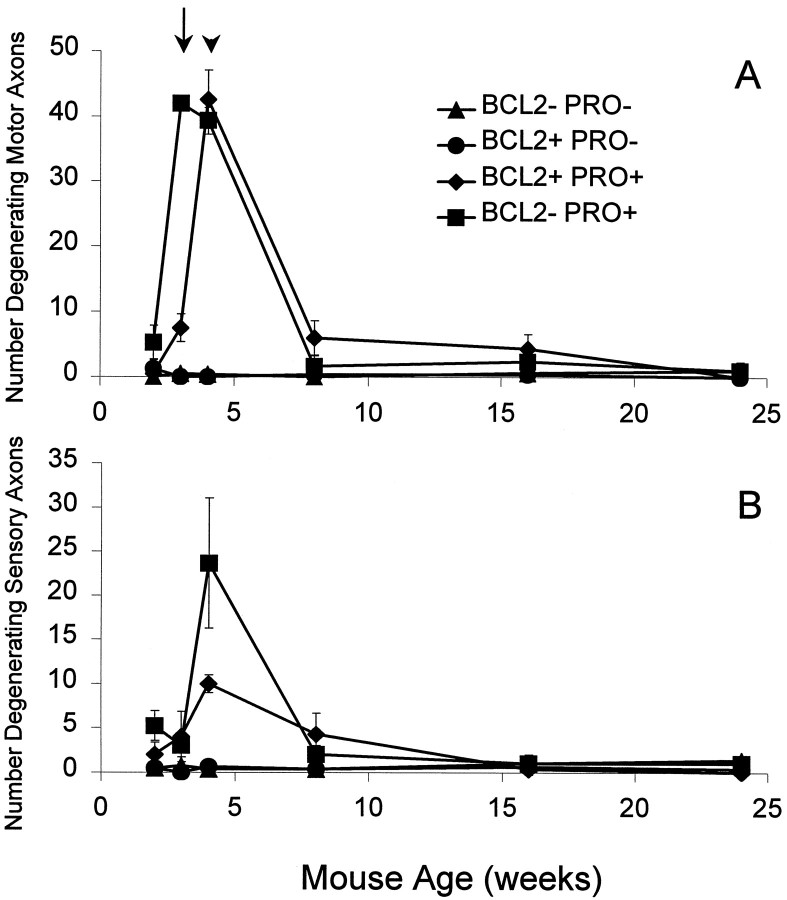Fig. 4.
Overexpression of Bcl-2 in NF-L (Pro) mice delays onset and decreases the amount of motor axon degeneration caused by NF-L (Pro) transgene–mediated damage. A, L5 motor axon degeneration is an early and transient event in the lifetime of the NF-L (Pro) mice (▪). The total number of motor axons degenerating in the NF-L (Pro) roots is much higher at 3 weeks of age than is that in the NF-L (Pro)/Bcl-2 overexpressor mice (♦). By 4 weeks of age the levels of degeneration are comparable between the singly and doubly transgenic animals, and by 8 weeks of age most of the degeneration has ceased. The arrow indicates degeneration at 3 weeks of age, and the arrowhead indicates degeneration at 4 weeks of age. Very few degenerating axons are observed in wild-type (▴) and Bcl-2–overexpressing (●) mice. Counts are averages from three to five mice from each genotype and age. B, The amount of NF-L (Pro) transgene–mediated sensory axon degeneration exhibited is less than that seen in the motor axons. L5 sensory axon degeneration is an early and transient event in the lifetime of the NF-L (Pro) mice (▪). The total number of sensory axons degenerating in mutant NF-L (Pro) roots is decreased upon Bcl-2 overexpression (♦). Very few degenerating axons are observed in wild-type (▴) and Bcl-2–overexpressing (●) mice. Counts are averages from three to five mice from each genotype and age. Error bars represent the SD of the data.

